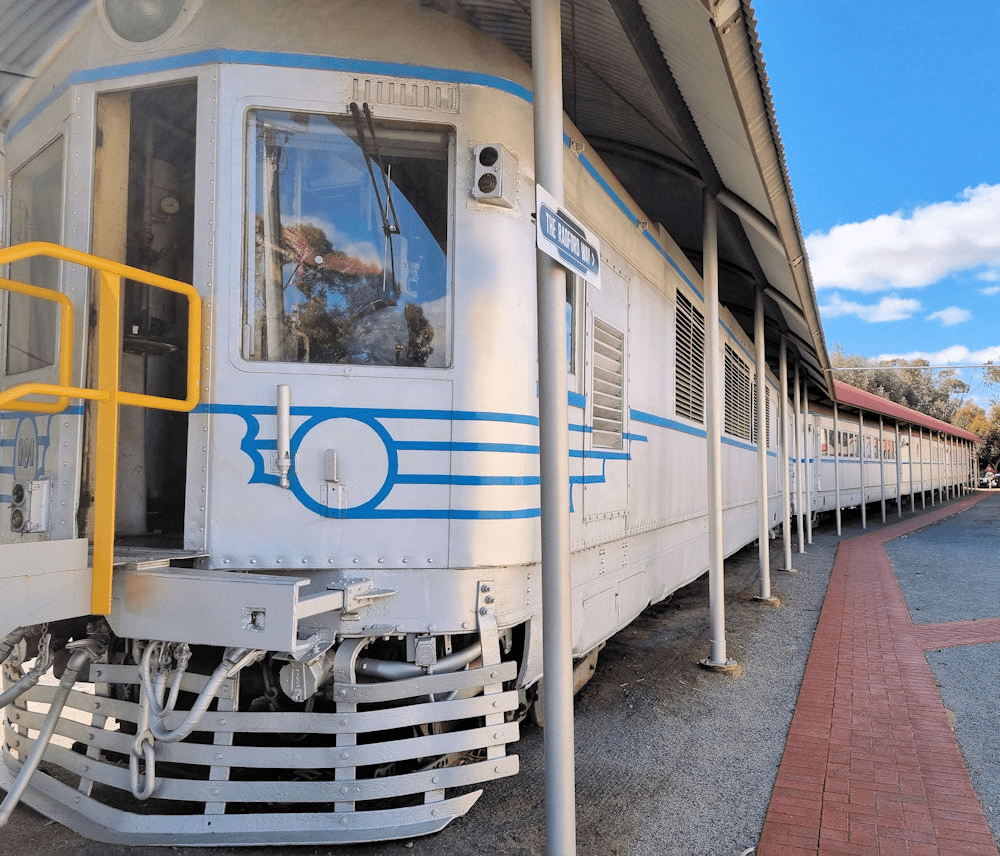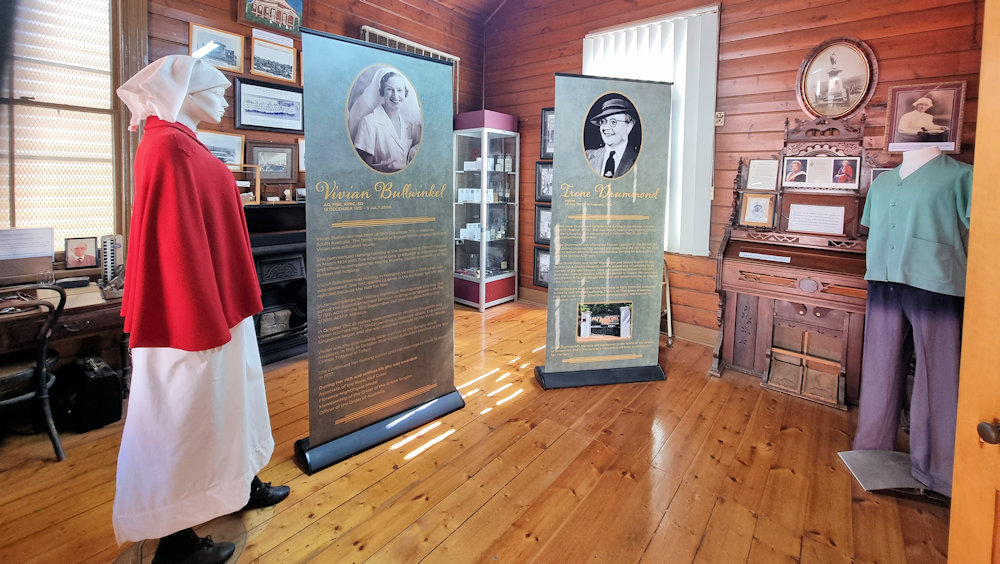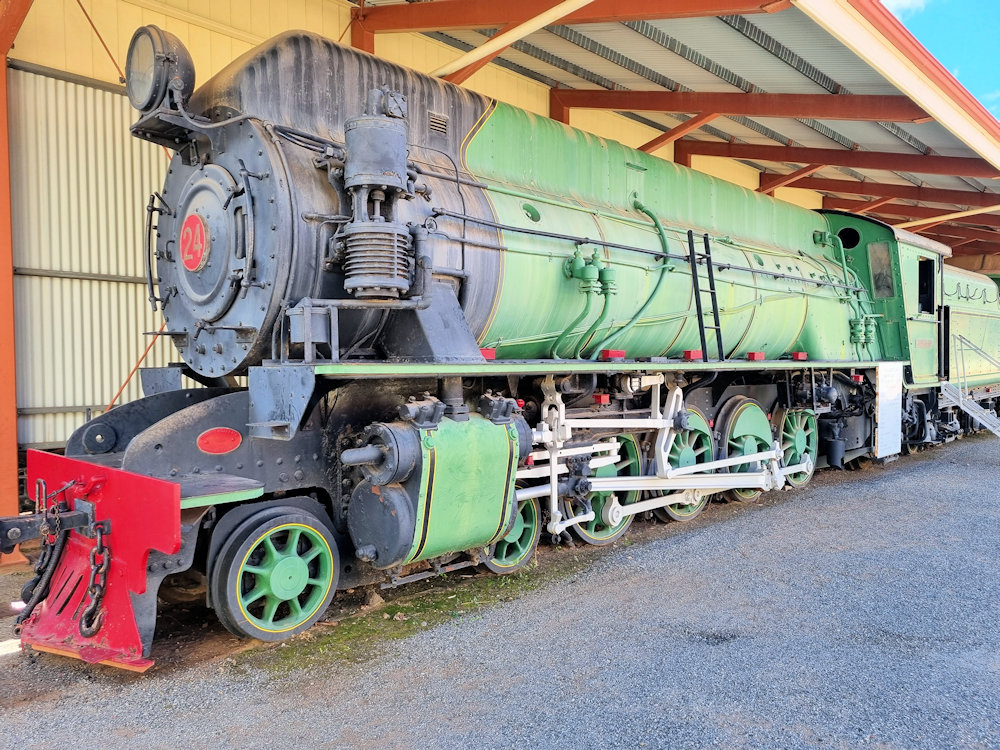Sulphide St Rail Museum Broken Hill
Located on the corner of Blende and Bromide Streets, the Sulphide St Rail Museum occupies the historic Sulphide Street Station, once the bustling terminus of the Silverton Tramway Company. The station opened in 1905 and operated until the early 1970s, serving as Broken Hill’s link to the outside world before the introduction of the standard-gauge line. Today, it has been transformed into a museum that not only preserves the railway story of the region but also offers a broader insight into the social, medical, and industrial history of Broken Hill.
Origins of the Silverton Tramway
When silver, lead, and zinc were discovered in Broken Hill during the 1880s, the new mining settlement was immediately faced with a logistical challenge: how to move vast quantities of ore from the remote desert town to the markets and smelters of South Australia. The nearest railhead was at Petersburg (now Peterborough), some 56 kilometres away, and the need for a connecting line became urgent.
In 1886, the Silverton Tramway Company was formed as a private enterprise. To avoid legal restrictions, it was termed a “tramway,” though it was in every sense a heavy-duty railway. By 1888, the line was completed, and trains were hauling ore and supplies across the Barrier Ranges. The tramway became Broken Hill’s lifeline, carrying its mineral riches out and bringing in food, fuel, and building materials.
Sulphide Street Station
The Sulphide Street Station opened in 1905, and for decades the station bustled with activity. When the standard-gauge connection to the Trans-Australian Railway was completed in 1970, the Silverton Tramway ceased operation, and Sulphide Street Station closed. What might have been lost to history was saved through the efforts of local heritage groups, leading to the creation of the museum.
The Museum’s Transformation
The closure of the station provided the opportunity to preserve its buildings and railway artefacts. Over time, the Sulphide Street Railway & Historical Museum grew into a multi-faceted institution. It now houses not only railway relics but also a wide range of displays that showcase Broken Hill’s broader history from its medical services, transport evolution and community life to its geological wealth.
The Railway Collection: Engines and Rolling Stock
At the heart of the museum is the railway collection. Locomotives, carriages, and wagons are displayed in the station yard, each piece representing a chapter in the history of the Silverton Tramway.
Y1: The First Locomotive
Y1 was the first of 19 Y-class locomotives purchased by the Silverton Tramway Company. Built in England, and used to haul ore and passengers, they formed the bulk of the locomotive fleet.

W24
The museum also houses W24, a 4-8-0 “W class” steam locomotive built by Beyer, Peacock & Co. Introduced in 1951 these engines replaced the earlier “A class”. They were retired early, once diesel engines became available.

ST27: The Diesel Era
By the 1960s, steam was being phased out in favour of diesel power. Silverton Tramway Diesel No. 27 (ST27) represents this modernisation. More efficient and economical than steam, diesels like ST27 dominated the line’s final years.
South Australian Railways T181
The museum also preserves T181, a locomotive transferred from the South Australian Railways. Its presence highlights the close cooperation between the government system and the privately-run Silverton line. T181 was the last steam engine to haul a train from Peterborough into Broken Hill on 9 January 1970.

The Silver City Comet
Built at the NSW Rail Workshops at Eveleigh, the Silver City Comet was the first air-conditioned train in the British Empire.

The Hospital Museum
Another highlight of the museum is the Hospital Museum, which preserves medical equipment from the early days of Broken Hill Hospital. In a remote mining town, accidents and injuries were frequent, and medical staff had to work with limited resources.
Displays include vintage operating tables, surgical instruments, nursing uniforms, and early X-ray machines. They show both the rudimentary beginnings of healthcare in the region and its gradual modernisation.



The Mineral Collection
Broken Hill is world-famous for its mineral deposits, and the museum’s mineral collection showcases this geological heritage. Silver, lead, zinc, and associated minerals are displayed in cabinets. For geologists and lay visitors alike, the collection highlights the extraordinary natural resources that gave rise to the city.
Without these minerals, there would have been no mines, no tramway, and no Broken Hill. The mineral collection anchors the museum’s narrative, reminding visitors that the city’s history is inseparable from its geology.

Visiting the Museum
The Sulphide St Rail Museum is centrally located in Broken Hill, making it easy to visit as part of a broader exploration of the city. The station building has been carefully restored, and the surrounding yards house locomotives, carriages, and wagons that can be viewed up close. Interpretive signs provide context, ensuring that both railway enthusiasts and general visitors can appreciate the significance of the exhibits.
This was an interesting and educational visit. It covered not only the railway, but also nursing, geology and the broader history of Broken Hill. The well maintained and expertly displayed exhibits along with their information boards made it fun to explore.

Leave a Reply